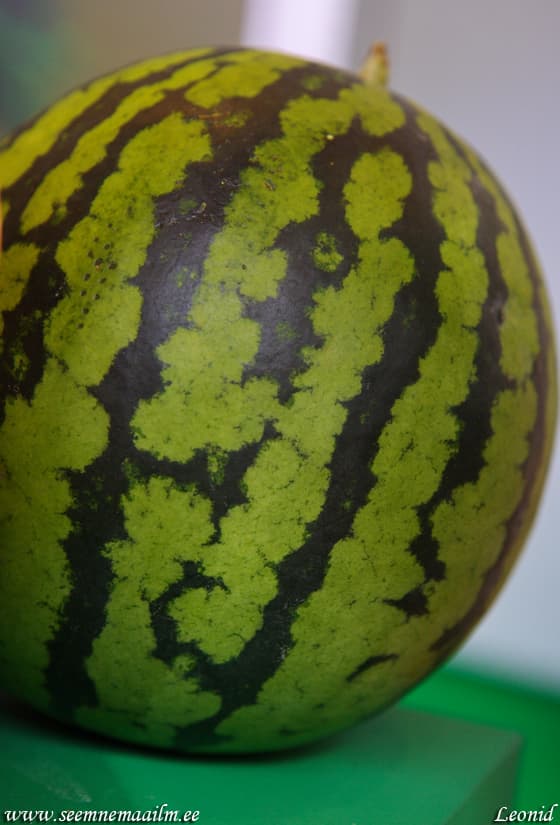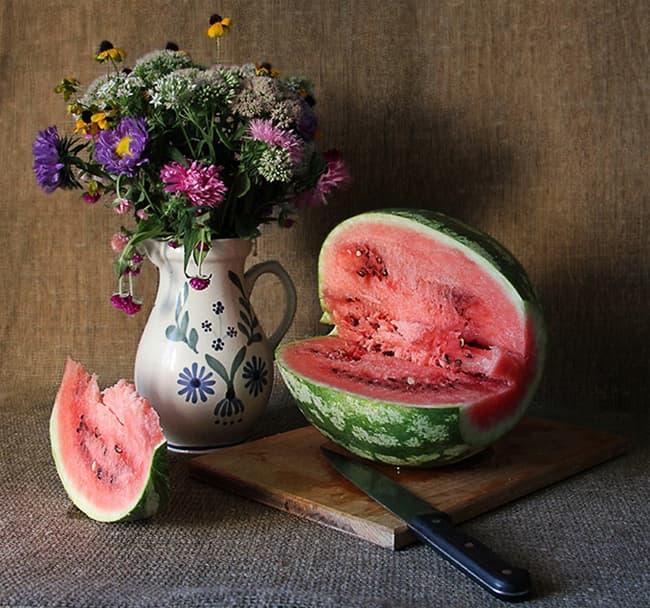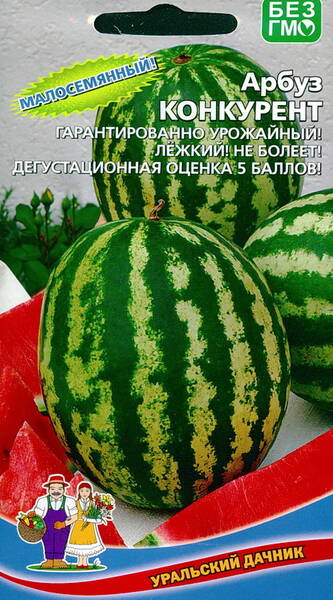Tender, juicy and very sweet pulp!
Guaranteed productive variety of mid-early ripening. The fruits are round, light green, with wide, dark green stripes, with an average weight of 7-9 kg.
The pulp is intensely red, juicy, very sweet, crispy and aromatic, with increased sweetness. The seeds are small, dark brown, few in number.
Value of the variety: excellent taste, few seeds, excellent yield, excellent keeping quality, high transportability.
Grows well on sandy and sandy loam soils. Excessively wet soils are not suitable. The area should be well heated and lit, protected from the winds.
It can be grown in the same place after 4 years.
Agrotechnics.
Sowing is done when the soil warms up to a depth of 8-10 cm to +15°C.
Before sowing, the seeds are treated in a solution of potassium permanganate (“potassium permanganate”) and then washed with clean water.
In the case of the seedling method of cultivation, the seedlings are planted when the threat of frost has passed, at the age of 3-4 true leaves.
In open ground, watermelon is planted according to a 140x100 cm pattern, in greenhouses - 70x70 cm using trellises.


Watermelon. Citrullus lanatus (Thunb.)
* Watermelon pulp contains many different vitamins (PP, C, D, B1, B2, and B6, as well as carotene), iron salts, copper, phosphorus, potassium, calcium, zinc, and folic acid. This combination of vitamins and microelements stimulates metabolic processes in the liver, improves bile composition, prevents gallstone formation in the gallbladder and bile ducts, and has an anti-sclerotic effect.
In terms of iron salt content, watermelon is second only to spinach and lettuce leaves, and in terms of the presence of folic acid, it ranks first.
The presence of lycopene in watermelon enables it to fight many types of cancer cells.
Watermelon seeds are no less beneficial: they contain 25-30% oil, which is used to make watermelon oil, which is comparable in medicinal properties to almond oil and comparable in taste to olive oil. Watermelon oil is rich in zinc and selenium.
Watermelon rinds are much richer in vitamins than the watermelon pulp itself, and they also contain many different amino acids.












